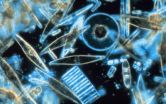(Press-News.org) A new study by Northwestern University researchers has revealed that public DNS services could actually slow down users' web-surfing experience. As a result, researchers have developed a solution to help avoid such an impact: a tool called namehelp that could speed web performance by 40 percent.
Through a large-scale study involving more than 10,000 hosts across nearly 100 countries, Fabián Bustamante, associate professor of electrical engineering and computer science at Northwestern's McCormick School of Engineering and Applied Science, and his team found that one cause of slow web performance is a growing trend toward public Domain Name Systems (DNS), a form of database that translates Internet domain and host names into Internet Protocol (IP) addresses.
DNS services play a vital role in the Internet: every time a user visits a website, chats with friends, or sends email, his computer performs DNS look-ups before setting up a connection. Complex web pages often require multiple DNS look-ups before they start loading, so users' computers may perform hundreds of DNS look-ups a day. Most users are unaware of DNS, since Internet Service Providers (ISP) typically offer the service transparently.
Over the last few years, companies such as Google, OpenDNS, and Norton DNS have begun offering "public" DNS services. While "private" DNS services, such as those offered by ISPs, may be misconfigured, respond slowly to queries, and go down more often, public DNS services offer increased security and privacy, and quicker resolution time. The arrangement is also beneficial for public DNS providers, who gain access to information about users' web habits.
Bustamante and his team found that while using public DNS services may provide many benefits, users' web performance can suffer due to the hidden interaction of DNS with Content Delivery Networks (CDNs), another useful and equally transparent service in the web.
CDNs help performance by offering exact replicas of website content in hundreds or thousands of computer servers around the world; when a user types in a web address, he is directed to the copy geographically closest to him. Most popular websites – more than 70 percent of the top 1,000 most popular sites, according to the Northwestern study – rely on CDNs to deliver their content quickly to users around the world.
But researchers found that using public DNS services can result in bad redirections, sending users to content from CDN replicas that are three times farther away than necessary.
Public DNS and CDN services are working to address the problem, but current users are left with two mediocre options – bad web performance through public DNS services or bad security and privacy support through private DNS services.
Now Bustamante and his group have developed a tool called namehelp that may let users have their cake and eat it, too – by using public DNS services without compromising on web performance.
namehelp runs personalized benchmarks in the background, from within users' computers, to determine their optimal DNS configuration and improve their web experience by helping sites load faster. If it finds that a user is receiving less than optimal web performance, namehelp automatically fixes it by cleverly interacting with DNS services and CDNs to ensure the user gets his content from the nearest possible copy.
###
You can download namehelp today from: http://aqualab.cs.northwestern.edu/projects/namehelp.
The paper describing the research is titled "Content Delivery and the Natural Evolution of DNS: Remote DNS Trends, Performance Issues and Alternative Solutions." The team's findings will be presented at the Internet Measurement Conference (IMC 2012) in Boston this November. In addition to Bustamante, authors on the paper are lead author John S. Otto, Mario A. Sanchez, and John P. Rula, all of Northwestern.
Study reveals impact of public DNS services; researchers develop tool to help
2012-10-26
ELSE PRESS RELEASES FROM THIS DATE:
Triclosan needs to be monitored
2012-10-26
This press release is available in German.
Leipzig. Researchers from Germany and Slovakia have pointed out that the chemical triclosan is one of those particularly harmful substances for the ecological status of rivers that are still not sufficiently monitored. With extensive monitoring conducted in the Elbe river basin that was more comprehensive than standard monitoring procedures, concentrations of the chemical at numerous test sites exceeded the predicted no-effect concentration (PNEC) for algal communities up to a factor of twelve. From the 500 river basin-specific ...
Results of the AIDA STEMI MRI sub-study presented at TCT 2012
2012-10-26
MIAMI, FL – OCTOBER 25, 2012 – A study confirmed no differences in various measures of heart damage, according to cardiac magnetic resonance (MRI) imaging, in patients receiving the anti-clotting medication abxicimab directly into the heart (intracoronary) compared to those receiving it intravenously (IV). The results of the AIDA STEMI MRI sub-study were presented today the 24th annual Transcatheter Cardiovascular Therapeutics (TCT) scientific symposium. Sponsored by the Cardiovascular Research Foundation, TCT is the world's premier educational meeting specializing in interventional ...
Report: Bushmeat pushes Southern African species to the brink
2012-10-26
JOHANNESBURG, SOUTH AFRICA (October 25, 2012) – A recent report says illegal hunting of wildlife in South African Development Community (SADC) states can lead to the eradication of many species across extensive areas and even complete ecological collapse.
Africa's iconic large carnivores, such as cheetah, lion, leopard, and wild dog, are particularly vulnerable to this practice, either because they are caught in the bycatch from unselective methods such as snaring, or due to loss of prey. The report says that the scale and severity of the threat is such that, without ...
UC Davis researchers develop new drug delivery system for bladder cancer using nanoparticles
2012-10-26
(SACRAMENTO, Calif.) -- A team of UC Davis scientists has shown in experimental mouse models that a new drug delivery system allows for administration of three times the maximum tolerated dose of a standard drug therapy for advanced bladder cancer, leading to more effective cancer control without increasing toxicity.
The delivery system consists of specially designed nanoparticles that home in on tumor cells while carrying the anti-cancer drug paclitaxel. The same delivery system also was successfully used to carry a dye that lights up on imaging studies, making it potentially ...
New genomics study shows ancestry could help solve disease riddles
2012-10-26
LA JOLLA, CA – October 25, 2012 – Explosive advancement in human genome sequencing opens new possibilities for identifying the genetic roots of certain diseases and finding cures. However, so many variations among individual genomes exist that identifying mutations responsible for a specific disease has in many cases proven an insurmountable challenge. But now a new study by scientists at The Scripps Research Institute (TSRI), Scripps Health, and Scripps Translational Science Institute (STSI) reveals that by comparing the genomes of diseased patients with the genomes of ...
A 'nanoscale landscape' controls flow of surface electrons on a topological insulator
2012-10-26
CHESTNUT HILL, MA (October 25, 2012) – In the relatively new scientific frontier of topological insulators, theoretical and experimental physicists have been studying the surfaces of these unique materials for insights into the behavior of electrons that display some very un-electron-like properties.
In topological insulators, electrons can behave more like photons, or particles of light. The hitch is that unlike photons, electrons have a mass that normally plays a defining role in their behavior. In the world of quantum physics, where everyday materials take on surprising ...
Changing the balance of bacteria in drinking water to benefit consumers
2012-10-26
WASHINGTON, Oct. 25, 2012 — The latest episode in the American Chemical Society's (ACS') award-winning Global Challenges/Chemistry Solutions podcast series reports that scientists have discovered a plausible way to manipulate the populations of mostly beneficial microbes in "purified" drinking water to potentially benefit consumers.
Based on a report by Lutgarde Raskin, Ph.D., in ACS' journal Environmental Science & Technology, the new podcast is available without charge at iTunes and from www.acs.org/globalchallenges.
In the new episode, Raskin explains that municipal ...
Small marine organisms' big changes could affect world climate
2012-10-26
In the future, warmer waters could significantly change ocean distribution of populations of phytoplankton, tiny organisms that could have a major effect on climate change.
Reporting in this week's online journal Science Express, researchers show that by the end of the 21st century, warmer oceans will cause populations of these marine microorganisms to thrive near the poles and shrink in equatorial waters.
"In the tropical oceans, we are predicting a 40 percent drop in potential diversity, the number of strains of phytoplankton," says Mridul Thomas, a biologist at Michigan ...
Small organisms could dramatically impact world's climate
2012-10-26
EAST LANSING, Mich. — Warmer oceans in the future could significantly alter populations of phytoplankton, tiny organisms that could have a major impact on climate change.
In the current issue of Science Express, Michigan State University researchers show that by the end of the 21st century, warmer oceans will cause populations of these marine microorganisms to thrive near the poles and may shrink in equatorial waters. Since phytoplankton play a key role in the food chain and the world's cycles of carbon, nitrogen, phosphorous and other elements, a drastic drop could have ...
Individual gene differences can be tested in zebrafish
2012-10-26
HERSHEY, Pa. -- The zebrafish is a potential tool for testing one class of unique individual genetic differences found in humans, and may yield information helpful for the emerging field of personalized medicine, according to a team led by Penn State College of Medicine scientists. The differences, or mutations, in question create minor changes in amino acids -- the building blocks of DNA -- from person to person. Zebrafish can be used as a model to understand what biological effects result from these genetic mutations.
Personalized medicine uses modern technology and ...



